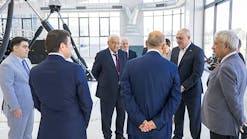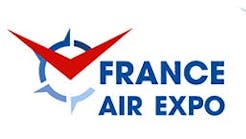The Department of Transportation (DOT) Safety Institute (TSI) offers a three-day maintenance human factors class about four times per year. The course is available to industry and government participants as part of an advanced certificate program for safety officers and accident investigators. The primary customer is FAA Flight Standards. This article is about a recent class and about content trends in today’s human factors courses.
This course was offered at a unique time, when most of the class just resumed work after the January furlough. Spirits were especially high since everyone was glad to be back on the job. Of course, there were the inevitable discussions about the backlog of scheduled inspections, correspondence, certifications, and more. Inspectors wanted the flying public to not only be safe but also to have the security of regulatory oversight. There was the general perception: that airline flight and maintenance had been proceeding safely during the furlough. That is attributable to an overall industry safety focus that is reinforced not only for commercial reasons but also due to many FAA-mandated programs. That includes continuing analysis and surveillance efforts. Programs like the Aviation Safety Action Program (ASAP) are greatly enhanced and require FAA inspector presence. A safe system does not necessarily mean that safety stops the moment FAA is not physically present. Safely was not compromised. FAA is back to cooperate with industry to reinforce safety programs.
January/February is a traditional time to look back at the previous year’s international safety statistics. The average, from 2010-2017 is 16.1 fatal events/year. The fatal large jet accident number went from 12 in 2017 to 14 in 2018. While four of the 14 had only one fatality, there were two large losses including, the Lion Air 737 , with 181 fatalities, and the Cubana 737, with 112 souls lost. Over half of the events had a human factors component with both flight and/or maintenance contributing factors. Therefore, 2018 was a reversal of recent annual trends.
An Evolving Curriculum
We started the 2019 class by asking the inspectors what they expected to learn. The average aviation work experience for the February 2019 class was 35 years. Such experienced participants have already had many HF classes. They seldom want more fundamental scientific information. Instead, they want a short review followed by information that they can use in their job. Inspectors want to be able to explain human factors to others. Thus, we had the explicit instructional goals shown in Table 1.
This course will empower you to:
• Add value to the HF programs that you oversee
• Strengthen your ability and spirit to speak about human factors to maintenance audiences
• Identify HF performance challenges and to offer solutions
• Assess the quality of the maintenance safety culture
• Renew commitment to your inspector role in HF-related safety
Table 1. Training goals
Advanced HF training does not have to have the traditional kinds of declarative knowledge where learners are measured by their ability to define human factors or recite a list of human errors. Instead, advanced training goals should strive to affect the learner’s ability and attitude to apply principles and add value to the fundamentals. From a training perspective, new human factors training must consider sources like Bloom’s Taxonomy, an educational structure from the '50s. That means that the training must range from the easy stuff, like remembering and recalling facts, to higher goals like applying the learning to the work environment. Learners must be able to create new ideas and concepts based on not only new knowledge but also their life and aviation work experience.
The class started with a review of methods for considering human factors in maintenance. Each of the methods are shown in Figure 1. I always refer to this graphic as “my one page to consider human factors.” The methods included: SHELL, Swiss Cheese, Dirty Dozen, Probability-Severity Matrix, Bow Tie, Threat and Error Model (not pictured), and PEAR. The class used the PEAR Model (People-Environment-Action-Resources) as a guideline/framework to structure discussion about many human-factors related events.
Adult learners thrive on relevant stories. Therefore, with the PEAR structure the class reviewed many events/accidents. We always take a moment to acknowledge that this technical discussion of accidents respects the heart-breaking loss of family and friends. Table 2 lists the PEAR categories with examples. Our class has about four example events related to each letter in PEAR. Inspectors often add stories as part of the class discussion.
People Examples
2015, German Wings, French Alps, Pilot mental fitness for duty, personnel selection, and more
2018, US-Bangla, Kathmandu, Captain’s demeanor with crew and ATC
Environment Examples (including corporate communications)
2000, Alaska, California, Horizontal stabilizer jackscrew failure and more
2018, Lion Air, Indonesia, Corporate communications failure at multiple levels
Actions Examples
2008, XL, France, Failed AOA during post lease flight test and more
2013, British Airways, UK, Failure to secure A320 cowling. 50 such incidents since 1992
2014, Virgin Atlantic, UK, Installation error on B747 Landing gear actuator
Resources Example
2003, Air Midwest, Charlotte, Training, supervision, procedures, crew rest, and more
2011, Airtours, Nevada, Scheduling, available personnel, reused locking device, and procedures.
Table 2: Example of PEAR Categories for Events
Today’s Topics for Discussion
Our aviation safety inspectors class has three to five structured discussions listed in Table 3. For discussions we use the format of small group discussion and problem solving. Then, there is a full class discussion, with a reporter from each group. The discussions seem to be a favorite part of the class for all participants, including the instructors. The talks always reinforce, to me, that the aviation safety inspectors are truly dedicated to their safety mission. As an HF instructor I certainly recognize that I am the student during the discussion segments of the class.
Identifying the Top Five Maintenance Human Factors Challenges
Assessing Safety Culture in a Maintenance Organization
Competencies for a Maintenance HF Trainer and for an Airworthiness Inspector
Voluntary Reporting, Just Culture, and Compliance Process
Relationship Between Safety Management and Human Factors
Table 3. Topics for Class Discussion
One of the course goals is to empower and invigorate the learners to make human factors presentations to others. Therefore we do have content-centered topics. Examples are: worker fatigue, communications, and the criticality of following procedures. Of course, learners are given editable copies of all presentation materials and related media. During 2019, we will promote the Follow Procedure topic. That includes an hour-long web-based training program available on the FAA Safety Team website (www.faasafety.gov).
Final Comments about Human Factors Training
I have been delivering human factors training for nearly 40 years. Most of it has been related to maintenance and engineering. Most has been in aviation maintenance domains. I am certain that such training is as important today as it was when I began. I am quite sure that my enthusiasm for the topic has not diminished as I have written many papers like this one.
All maintenance human factors training must be matched to the audience. A fundamental class must be aligned with regulatory guidance. Recurrent training must align with the evolved human performance and technical challenges.
The Joint Aviation Authority, the European Aviation Safety Agency, and other National Aviation Authorities established regulations and guidelines in the mid-'90s. Groups like the International Civil Aviation Organization, Transport Canada, and the UK CAA published significant training documents. At the same time, companies like Lufthansa Technical Training created significant HF training materials, including computer-based training that was used by at least 200,000 engineers and mechanics worldwide. Many other companies followed the Lufthansa lead. International consultants established companies to meet the training demand. The FAA started a maintenance human factors research program in 1988. Those early efforts were excellent. The fundamental HF training contents and ideas remain relevant albeit worn out in format. However, the necessary and oft-regulated recurrent training presents an opportunity to update the aging fundamental materials and match them to HF challenges that may not have been present in the past 30 to 40 years.
Many readers have heard me light-heartedly say that “there is good job security in addressing human error.” It is as true today as well as when I started training maintenance human factors. Nevertheless, keep trying.
Need more information?
You can find 10 years worth of “Dr. Bill” wisdom published in the AMT magazine archives at AviationPros.com. Products from the FAA Maintenance Human Factors Research program are at www.humanfactors.com.






